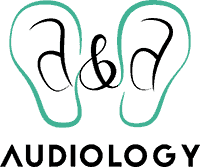- The Connection Between Hearing Loss and Dementia - July 30, 2024
- The Advantages of Rechargeable Hearing Aids - July 16, 2024
- How to Enjoy Music Festivals While Protecting Your Hearing - July 3, 2024
Far from being a unique condition, almost 13 million American adults have a condition in which hearing loss impacts only one of their two ears. Of those cases, around 350,000 people live with a more severe condition known as single-sided deafness, in which hearing is completely lost in one ear.
Another name for single-sided hearing loss is unilateral hearing loss, which means it affects only one side of the body. When we have hearing loss present in both ears, experts refer to it as a bilateral condition.
Single-sided hearing loss
It is most common in people between the ages of 60 and 79, and the rates are slightly higher in women of that age. Audiologists will diagnose this condition when one ear retains normal or close to normal hearing and the other ear demonstrates degrees of hearing loss. You may recall the central character in “It’s a Wonderful Life,” George Bailey, who famously had friends speak into his good ear.
In most cases, single-sided hearing loss is a permanent condition. However, some instances are reversible with medical intervention. The great news is that all types of hearing loss can be treated with proven hearing loss solutions.
Causes of single-sided hearing loss
We see cases of single-sided hearing loss from both sensorineural (where hearing loss is caused by damage to the inner ear) and conductive (where an obstruction interrupts healthy hearing) causes.
In terms of sensorineural causes, genetics might be the root of the condition. In other people, viral or bacteria infections may be to blame. Some cases of noise-induced hearing loss occur where only one ear is affected due to the position of the source of the noise. This can happen in one, sudden event or slowly and over time with repeated exposure. Additionally, some circulatory disorders may harm the cells of one ear, while leaving the other ear with healthy and functioning cells.
People with bony growths or tumors, such as an acoustic neuroma, impacting only one ear have a conductive source of single-sided hearing loss.
Traumatic brain injuries or physical trauma might result in single-sided hearing loss in either the conductive or sensorineural categories.
Symptoms of single-sided hearing loss
People with single-side hearing loss often favor their ‘good ear,’ as mentioned before. They also tend to have problems hearing in chaotic or noisy environments, where two ears with healthy hearing help us to filter out background noise. Locating where sounds are coming from might be particularly troublesome. It might be difficult for you to discern volumes at times. As the severity of unilateral hearing loss increases, people with this condition might find that verbal conversation in general can be tiring and difficult.
Some resulting impacts of single-sided hearing loss might be withdrawing from group activities and socialization, depression, undue fatigue after conversation and even anxiety.
There is another, parallel condition called Sudden Hearing Loss, which most commonly impacts only one ear. This is a different cause and requires immediate treatment. If your hearing disappears from one ear in a matter of hours or in less than three days, contact your medical provider immediately.
Should you treat single-sided hearing loss?
Binaural hearing means that we use two ears to do things like locate sounds and orient ourselves in space. It’s a largely unconscious process that helps us notice, for example, if a car horn is honking from our left or our right. It might give us the time necessary to get out of danger’s path, in the instance of a speeding car, or it might help us turn towards a person calling our name.
In either event, it’s a process we often find useful in daily life. Treating single-sided hearing loss can help us retain that function.
In severe cases, such as single-sided deafness where most of the hearing has been lost in one ear, a cochlear implant will be used for treatment. More moderate cases of single-sided hearing loss can be easily treated with a hearing aid.
Schedule a hearing consultation today
The first step to take towards a more positive hearing experience is to schedule a hearing consultation with our highly trained team. We’ll guide you through the simple process of a hearing exam and work with you to find the solution that supports your unique needs.

